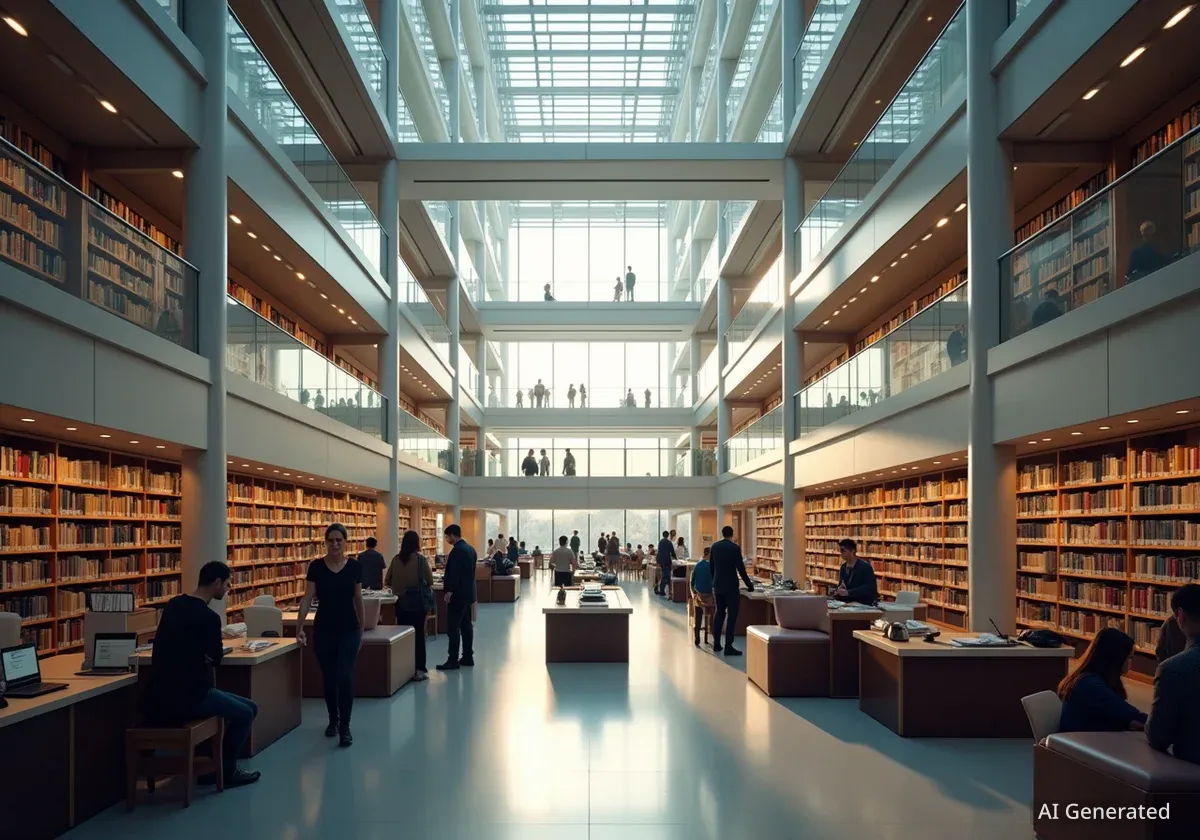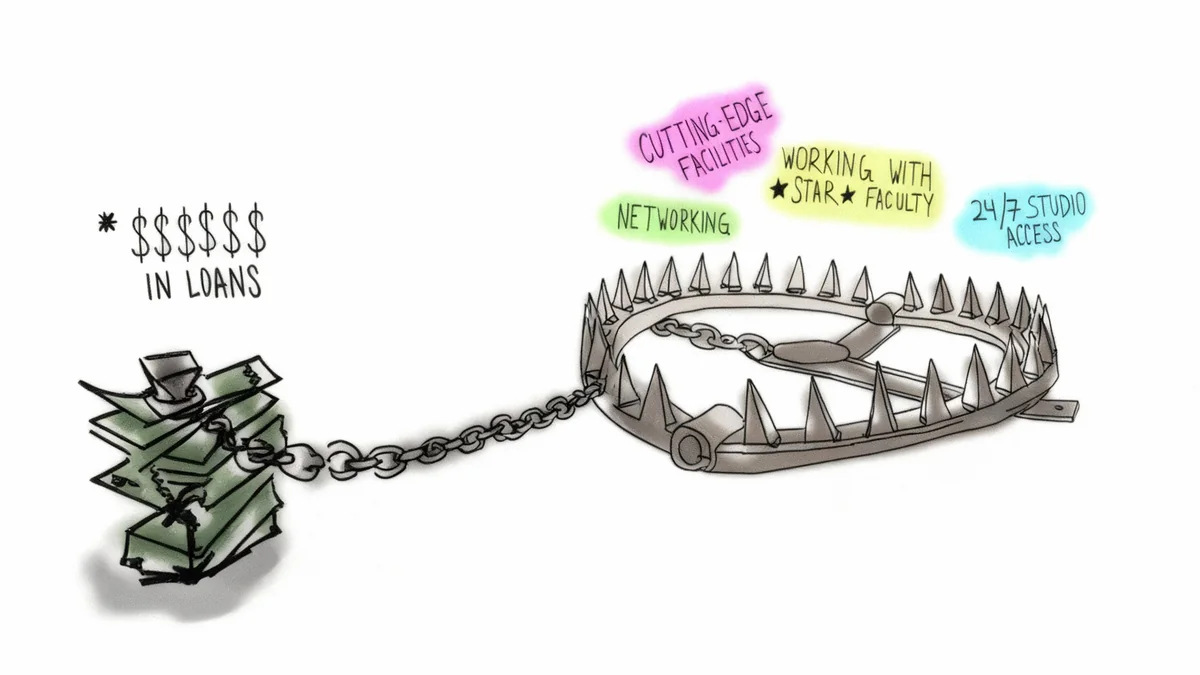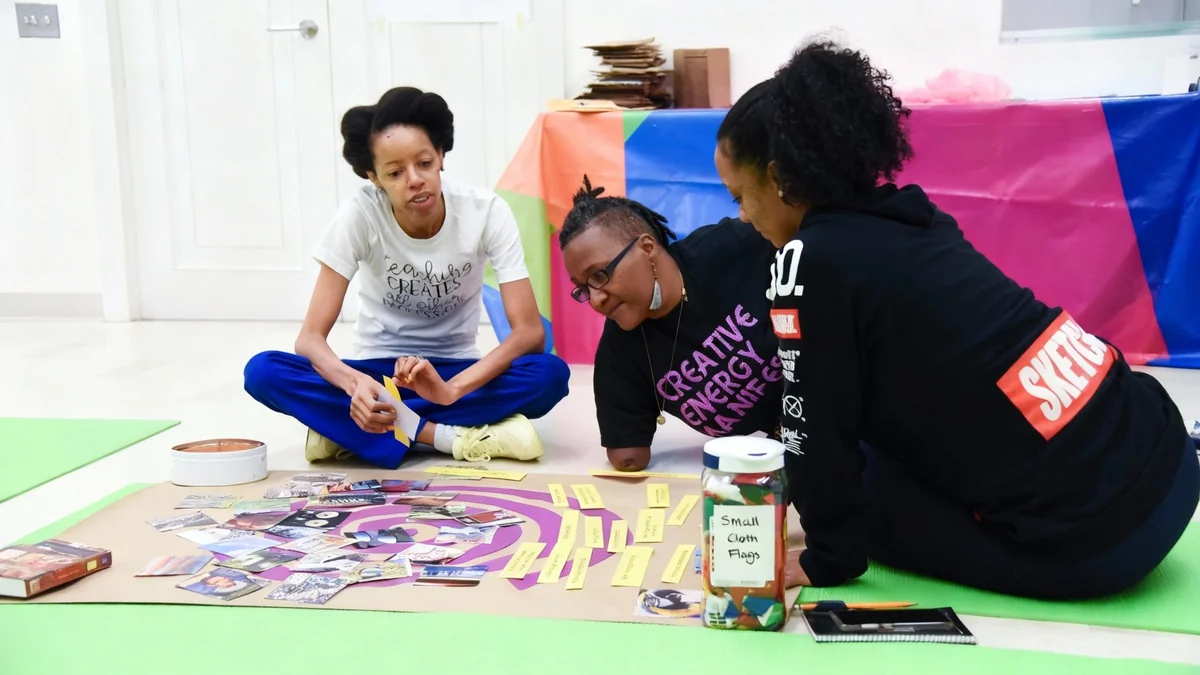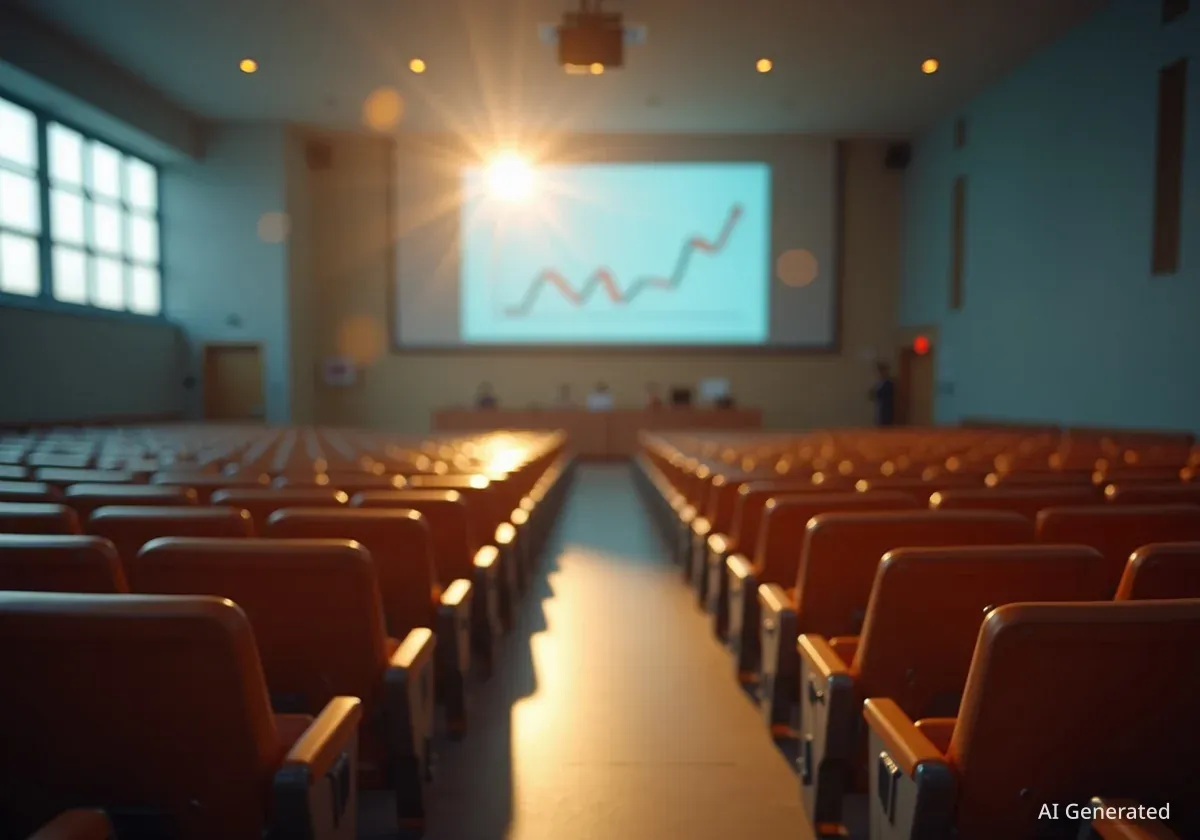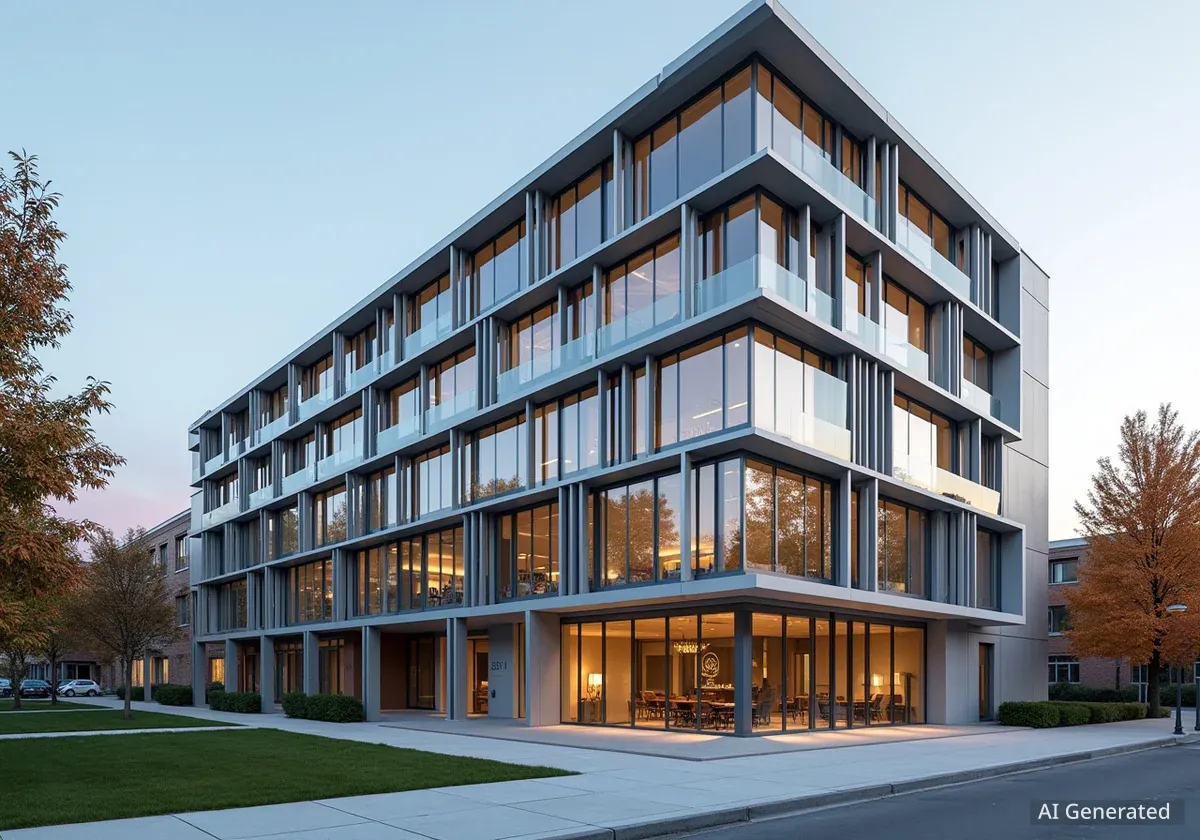The City of Phoenix has officially opened its new Central Library and Community Hub, a $180 million project designed to serve as a modern center for learning, technology, and community engagement. The facility, which spans 250,000 square feet, opened its doors on Monday, welcoming thousands of visitors in its first week and marking a significant investment in the city's public infrastructure.
Key Takeaways
- The new Phoenix Central Library is a $180 million, 250,000-square-foot facility.
- It features advanced technology, including a digital media lab, 3D printers, and a large public computer center.
- The project aims to serve over 1.2 million visitors annually and provide extensive community programs.
- Sustainability was a key design focus, with the building targeting LEED Gold certification.
A New Era for Public Access
The Phoenix Central Library represents a major shift from traditional library models. Instead of focusing solely on book lending, the new hub is designed to be a dynamic space for creation and collaboration. The project was funded through a combination of city bonds approved by voters in 2018 and private donations from local philanthropic organizations.
Construction began in early 2021 and was completed on schedule, despite challenges related to supply chains. According to city officials, the project created over 500 construction jobs and is expected to support 150 permanent positions, including librarians, tech support staff, and community program coordinators.
Project Background
The former central library, built in 1975, was deemed inadequate to meet the technological and community needs of the 21st century. A 2017 study by the Phoenix Urban Planning Commission highlighted the need for a larger, more versatile space to support digital literacy and provide public access to emerging technologies.
Inside the State-of-the-Art Facility
The five-story building offers a wide range of services and amenities designed to cater to a diverse population. The goal is to provide resources for everyone, from young children to entrepreneurs and senior citizens.
Technology and Innovation
A significant portion of the budget was allocated to technological infrastructure. The library's 'Innovation Lab' is a cornerstone of this investment. This dedicated space provides public access to high-end equipment that is often out of reach for individuals and small businesses.
- 3D Printing and Scanning: A suite of 3D printers is available for public use, allowing users to create prototypes, models, and artistic projects.
- Digital Media Studio: The studio is equipped with professional-grade cameras, audio recording equipment, and editing software for video production and podcasting.
- Public Computer Center: Over 200 high-speed computers are available, offering free internet access and software for job searching, research, and general use.
- Virtual Reality Zone: An area dedicated to VR experiences for educational and recreational purposes.
By the Numbers
The library's collection includes over 750,000 physical items, such as books, magazines, and media. Additionally, it offers digital access to more than 500,000 e-books and audiobooks, a 40% increase from the previous facility's digital collection.
Architectural Design and Sustainability
Designed by the architectural firm Sterling & Marsh, the building's design emphasizes natural light and open, flexible spaces. The exterior features a unique facade made of locally sourced sandstone and recycled aluminum panels, designed to regulate internal temperatures and reduce energy consumption.
"Our vision was to create more than just a building; we wanted to create a welcoming public square for the digital age," said Lead Architect David Sterling. "Every design choice, from the large atrium to the quiet reading nooks, was made to encourage both individual discovery and community interaction."
Sustainability is a core component of the library's design and operation. The facility is on track to receive LEED Gold certification, a globally recognized symbol of sustainability achievement. Key green features include a rooftop solar array that is projected to supply up to 30% of the building's energy needs, a rainwater harvesting system for landscape irrigation, and the extensive use of sustainable building materials.
Community Impact and Future Programs
City leaders expect the new library to have a profound impact on the local community. Mayor Sarah Jenkins emphasized its role in bridging the digital divide and fostering economic opportunity during the opening ceremony.
"This library is a direct investment in our people," Mayor Jenkins stated. "It provides the tools for lifelong learning, helps residents secure better jobs, and gives our children a safe and inspiring place to explore their potential. It is a cornerstone of a more equitable and prosperous Phoenix."
Expanded Programming
The library has already launched an expanded schedule of programs and workshops, all of which are free to the public. These initiatives are designed to enhance skills and provide valuable resources.
- Digital Literacy Workshops: Regular classes on basic computer skills, internet safety, and using social media for small businesses.
- Job Seeker Resources: Dedicated staff and computer terminals to assist with resume writing, online job applications, and interview preparation.
- Children's and Teen Services: An entire floor is dedicated to young people, featuring an early literacy center, homework help zones, and STEM-focused after-school programs.
- Cultural Events: A 300-seat auditorium will host author talks, film screenings, musical performances, and community meetings.
The Phoenix Central Library is projected to serve over 1.2 million visitors annually, making it one of the most visited public institutions in the state. Officials believe its combination of traditional resources and cutting-edge technology will set a new standard for public libraries nationwide.
